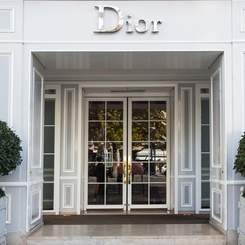Luxury isn’t just for the elite anymore. As post-industrial economies drive the democratization of high-end consumption, traditional “luxury” brands have been reaching out to a broader spectrum of society and finding innovative ways to appeal to an aspirational clientele. But has the boundary between ordinary and extraordinary begun to blur?
Professor Sonja Prokopec, head of the LVMH-ESSEC Luxury Brand Management Chair, explains that luxury brands have felt increasingly compelled to try and leverage their brand equity to attract new consumers. Typical strategies have included introducing entry-level products, launching brand extensions and licensing.
“Many brands today are faced with a difficult conundrum,” she says. “While brand equity affords these types of growth strategies, too much mass availability and appeal can hurt their brand in the long run by diminishing its role as a status symbol.”
“Luxury brands walk this fine line between luxury and mass-market in order to generate revenues in the short term, but their ultimate goal is long-term growth. Fist, appealing to a broader spectrum of society – and not just the super rich – can help a company drive up sales. That said, luxury firms are also hoping that their entry-level consumers mature into the higher-end offerings of the brand. Unfortunately, the second component of this type of strategy isn’t always successful.”
When Luxury Brands Lose the Mystique of ‘Exclusivity’
The first and most important consequence of a failed “affordable luxury” strategy is damage to brand equity. Some top luxury brands have learned this the hard way. Professor Prokopec cites Burberry, Diane Van Furstenberg and Pierre Cardin as examples of brands that have at some point in their histories over-developed entry-level offerings, mismanaged licensing and diluted their brand’s luxury status.
“Licensing is particularly dangerous when it’s mismanaged as it can easily spiral out of control,” she adds. “When you could buy Pierre Cardin lighters on every street corner, the ‘exclusive’ image of the brand was almost irreparably damaged. Similarly, after over licensing in the 1970s and 80s, Diane Von Furstenberg has had to slowly rebuild the luxury image of her brand almost from scratch.”
“The over development of entry-level products like wallets, key-chains etc. have also had their negative effects on brand value. Firms like Louis Vuitton, Gucci and Burberry have in recent years been trying to amplify their reputations as true luxury retailers by limiting the use of “monogram” and concentrating on new designs, unique fabrics and limited edition products with higher price points.”
What Makes a Client Want to “Trade-up”?
Well-managed strategies can help build long-term growth, and there is still lots of room for expansion. Although the number of luxury consumers has already tripled over the last 30 years, emerging markets and the younger generations of developed markets are prime targets for the future of the luxury industry.
These consumers are amongst those who are increasingly adopting a “trade-up” shopping strategy: Rather than stick to mid-market products, they’re investing now in a few choice luxury goods. And as their buying power increases over time, they’ll then be poised to ‘upgrade’: for example, the owner of a Louis Vuitton wallet might choose to invest in a handbag if they’ve developed a taste for the brand.
“Working with Vanessa Patrick of the University of Houston, our latest research looks at the factors that make a successful entry-level luxury strategy. In other words, we’re trying to figure out what makes customers to want to trade-up,” says Professor Prokopec. “Above all, we’ve found that it boils down to whether the consumer desires the brand overall or whether the desire is tied to specific products within the portfolio. Specifically, we show that the more specific the consumer’s desire to specific flagship brands, the lesser the impact the lower end extension can have on diluting the overall brand.”
“Brands that are built around strong, iconic, flagship products – like the 2.55 Channel handbag or the Tiffany diamond solitaire ring – are the most successful in terms of trade-up. The luxury image of these products is so strong that owning a Chanel wallet or a bracelet from the Tiffany silver collection aren’t likely to impact your desire to own the iconic product.”
Conversely, damage is more easily done when consumers desire the brand but this desire is not tied to a specific product. In this case, customers are more likely to be satisfied by their entry-level purchase. When Marc by Marc Jacobs began selling very low price-point products, the strategy backfired because customers were quite happy to just buy those extensions and not trade-up. Even though Marc by Marc Jabobs is an affordable luxury brand, it wasn’t strong enough to attract consumers to buy into their main line.
“But even following these ‘trade-up’ trends, consumers need to be nuanced,” she adds. “Surprisingly, we found that extensions and entry-level products are most effective in triggering a trade-up amongst those consumers who already own the brand. In other words, if I’ve never owned anything from Prada, just buying an entry-level bracelet is more likely to fulfill my desire for the brand. But if I know the Prada brand and I’m familiar with its DNA, the extension will be less likely to impact my desire to own their true luxury products.”
Above all, the successful strategy is about developing products that fit with the DNA of the brand. Although the entry-level products might have much smaller price-points, they should maintain quality and brand codes.









